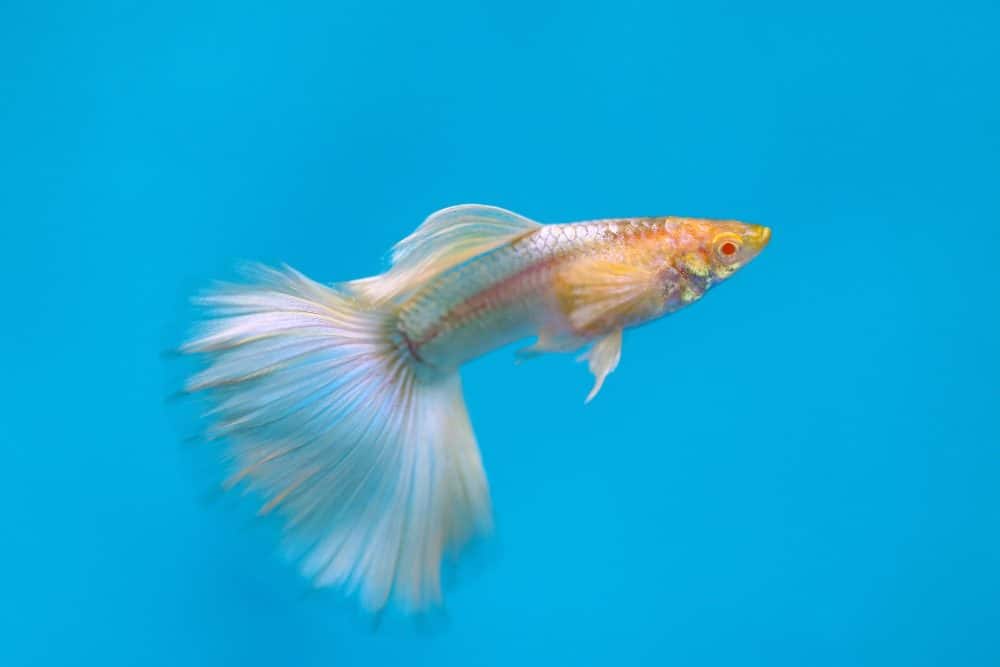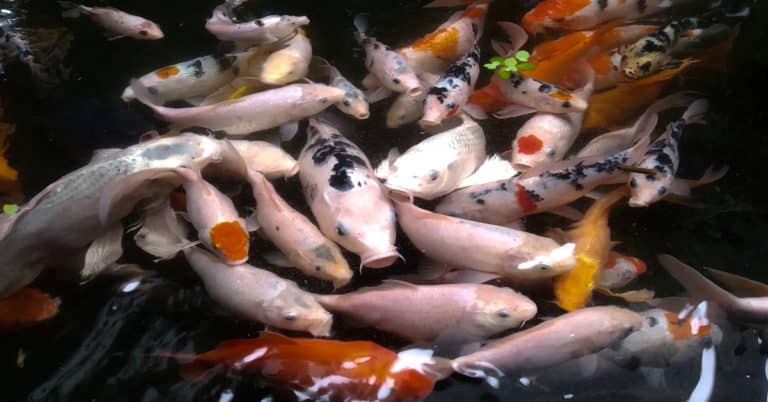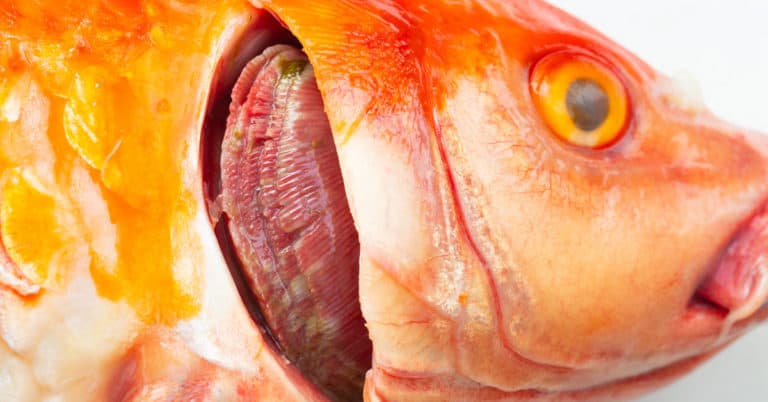Have you ever come across an entirely white Koi Fish with red eyes and wondered what caused such unique characteristics? Well, there are a few different aspects that are responsible, the main one being albinism. So what exactly is an albino Koi Fish?
Albinism is a rather complex topic. There is a lot of information on it, so don’t stress yourself out by reading through countless articles and blogs. I’m no expert when it comes to genetic disorders. Still, like yourself, I’ve also wondered about Albino Koi Fish and decided to do some research.
Like I said already, there is a lot out there, so I’ll cover all the significant points that I found to be most informative and helpful. Namely, I’ll go over the causes and effects of albinism and how it affects the appearance of Koi Fish specifically.

Just to clear up any potential confusion, an albino koi guppy is a type of guppy (poecilia reticulata)- not a type of koi carp - that grows to be about 2 - 3 inches long. This guppy fish is popular aquarium fish. You actually wouldn't want to have guppies and koi in the same habitat. Koi aren't ideally suited to living in a fish tank, and they would likely find the albino koi guppy quite tasty.
Albinism is a genetic disorder that can happen in all species. While it is far from ordinary, you’ve more than likely encountered a person or animal who had the condition in some way, shape, or form.
According to a piece by MedlinePlus, “An estimated 1 in 20,000 people worldwide are born with oculocutaneous albinism.” Given that there are billions of people on the planet, that number may seem incredibly tiny. However, it is large enough for albinism to be rare while also being familiar to the point where everyone usually comes across it at some point.
The disorder comes from a lack of or inability to produce melanin. Melanin refers to natural pigments/colors found in most creatures, and it has many purposes. There are too many to cover them all in detail, but it has the most impact on a person’s skin color.
In animals, its role is essentially the same, though there are relatively distinct differences between different species of animals.
Now that you are familiar with the concept that albinism is genetic and can occur in all species, let’s look at what exactly causes albinism in Koi.

The first thing to note when it comes to albinism in Koi Fish is the appearance change.
Sometimes, Koi Fish are born albino, and other times the color change happens over time. If a Koi Fish is born black or red, for example, and eventually changes to white, that is nothing to be alarmed by.
Albinism works the same in humans, with people’s hair color and skin color sometimes altering as they age. However, the thing to note with Koi Fish is that their turning white may not always be related to albinism.
Koi Fish can get white spots on their skin as a sign of natural loss of color, disease, carp pox, and other things unrelated to albinism. Thankfully, it is reasonably easy to distinguish between those and full-on albinism, as one is individual spots. In contrast, albinism is a total color shift.
Suppose you see a Koi Fish turning white. In that case, a simple web search will often be enough for you to tell whether it’s a harmless result of albinism or something more serious. For reference, the kind of white color that an Albino Koi Fish will have is somewhat similar to Kohaku, another breed of Koi with a white body and red markings.
During the time I spent researching this topic, whether an Albino Koi Fish was considered a good or bad thing came up a surprising amount. This was most prevalent on forums from Koi Fish owners who were reasonably concerned about their Fish miraculously changing colors or being born with white skin and red eyes.
By looking into the subject more deeply, I found that an Albino Fish is generally considered a defect because of how rare of an occurrence they are. It also makes sense when albinism is regarded as a “genetic disorder,” as I mentioned earlier.
From a predator / prey standpoint, an albino koi carp may be at a bit of a disadvantage in your koi pond when compared to other pond fish whose coloration may blend in better with the water, rocks, and plant life of your pond. A brighter, lighter color may make your fish stand out when compared to other fish in your pond. Not exactly the best camouflage when a hungry great blue heron stops by the pond.
If you’re lucky enough to have yourself an Albino Koi Fish, enjoy. The changed skin color is merely a byproduct of natural causes. Albinism is a chronic effect both in humans and in animals. Embrace the uniqueness instead of worrying about “fixing” it. Predators aside, your albino koi can probably expect a lifespan similar to the other fish in your pond.



